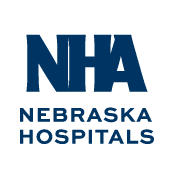Beyond the Basics of Case Management – Five Part Webinar Series (W3015)
Beyond the Basics of Case Management – Five Part Webinar Series
(W3015)
Dates: Thursdays, March 9, 16, 23, 30, & April 6
Time: 10:00 a.m. – 12:00 p.m. CT
Speakers:
Toni Cesta, Ph.D., RN, FAAN
Cost: $595 to NHA members (per hospital, no charge for additional lines, recordings available up to 60 days after the webinar)
Target Audience
Chief Medical Officer, Chief Nursing Officer, Compliance Officer, Emergency Department Personnel, Joint Commission Coordinator, Medical Records, Quality Improvement personnel, Risk Manager.
Course Curriculum
Having a foundation for effective case management is critical, and so is having a foundation for the more complex processes of case management. This five-part series will cover solutions for many of the challenges case managers face today.
The series will first focus on walking rounds and will discuss key stakeholders and the integral role they play in the rounding process. Next, there will be a discussion on how to incorporate case management at all access points to your hospital or health system. This will be followed by the often-challenging subject of how to best collaborate with physicians, especially high-volume physicians, such as hospitalists and emergency department physicians. As important as high-volume physicians are, physician advisors are an essential part of optimal case management processes. Case management across the continuum is the future of case management and this series will review how to remain forward looking in your practice. The series will conclude with a discussion of case management outcomes, what they are, how to measure them, and how to report them.
Learning Objectives:
At the conclusion of this session, participants should be able to:
Part One:
• Describe the differences between interdisciplinary rounds and other modalities such as huddles and teaching rounds.
• Define key members for the rounding team.
• Identify the role of each team member through scripting and other tools.
• Discuss a walking rounds checklist.
Part Two:
• Discuss the Two Midnight Rule components and how they are positively impacted by access point case management.
• Define best practices for case management in the emergency department, transfer center and admitting office.
• Identify ways in which to reduce readmissions, unnecessary admissions, and issues of noncompliance at hospital access points.
Part Three:
• Identify the key roles of the physician advisor and the hospitalist.
• Discuss best practice strategies with key physician stakeholders to ensure optimal outcomes.
• Describe opportunities for improvement at key locations throughout the hospital while collaborating with physicians.
Part Four:
• Explain the continuum of care and why it is important to case management professionals.
• Review the ways in which case management professionals can provide integrating mechanisms for patients as they transition across the continuum.
• Identify strategies for engaging stakeholders across the continuum.
• Ensure that patients and families are prepared for any transitions in care.
• Describe the applications of case management in a variety of settings.
• Define the three components of care transitions.
• Discuss community case management and why it is important to hospital case managers.
Part Five:
• Describe contemporary outcome measures for case management.
• Review how to create a workable case management dashboard.
• Recite how benchmarks can be applied to your case management dashboard.
Speaker Bios:
Toni G. Cesta, Ph.D., RN, FAAN is a founding partner of Case Management Concepts, LLC, a consulting company that assists institutions in designing, implementing, and evaluating case management departments and models, educational programs, and onsite support for leadership and staff.
She has been active in the research and development of case management for over 25 years. Her research has included two funded studies measuring the effects of a case management model on congestive heart failure and fractured hip patient populations, with measures of patient satisfaction, quality of life, and short- and long-term clinical perceptions and outcomes.
This speaker has no real or perceived conflicts of interest that relate to this presentation.

